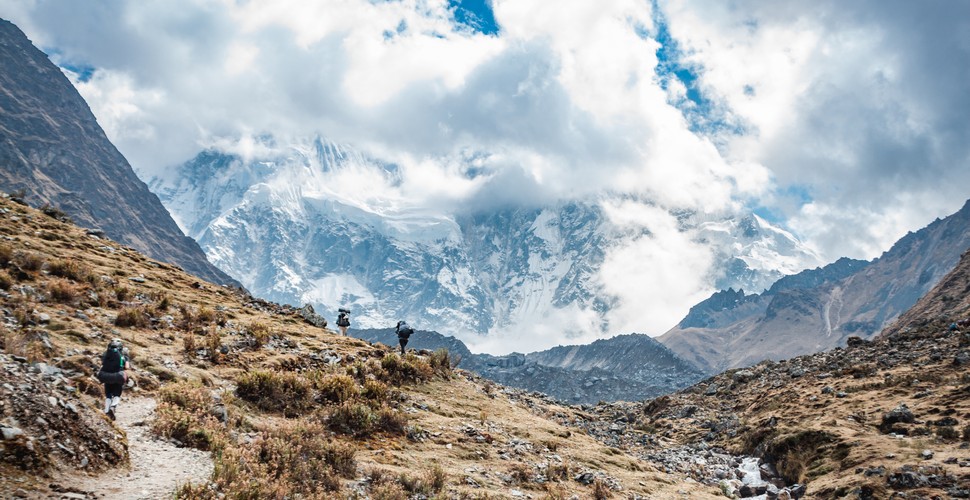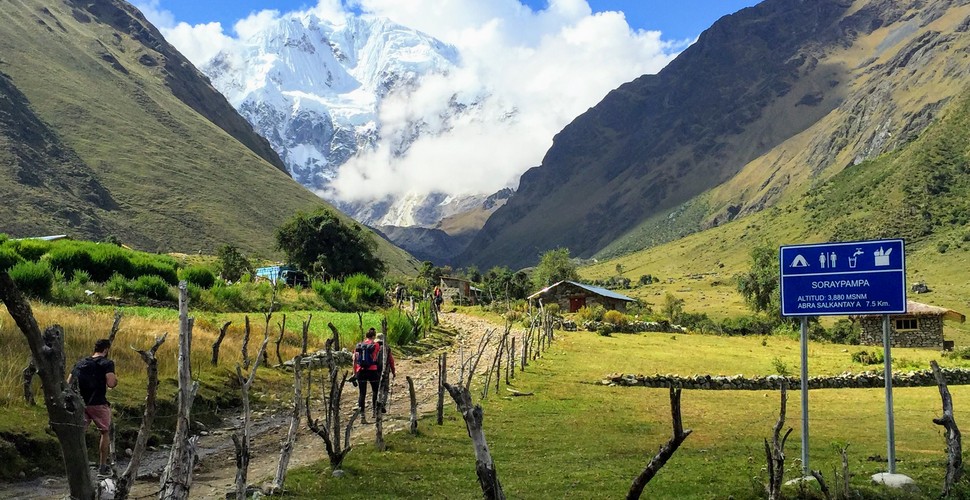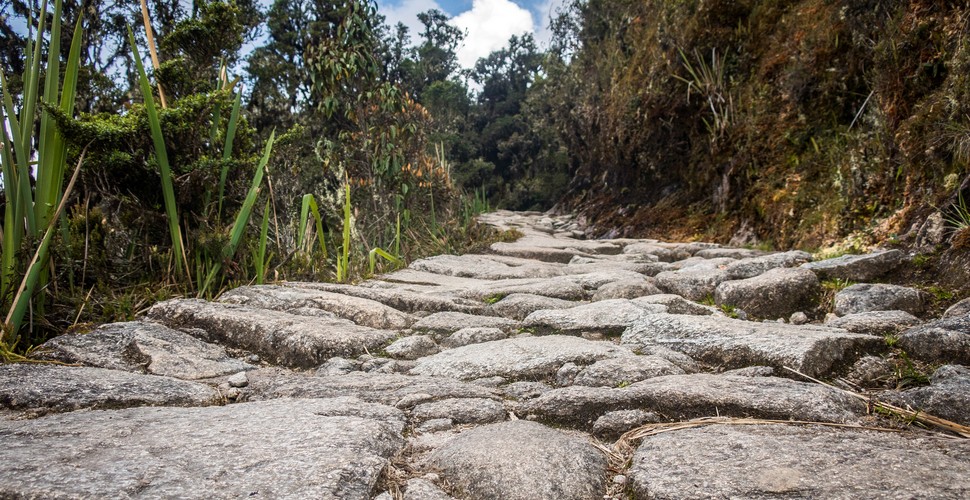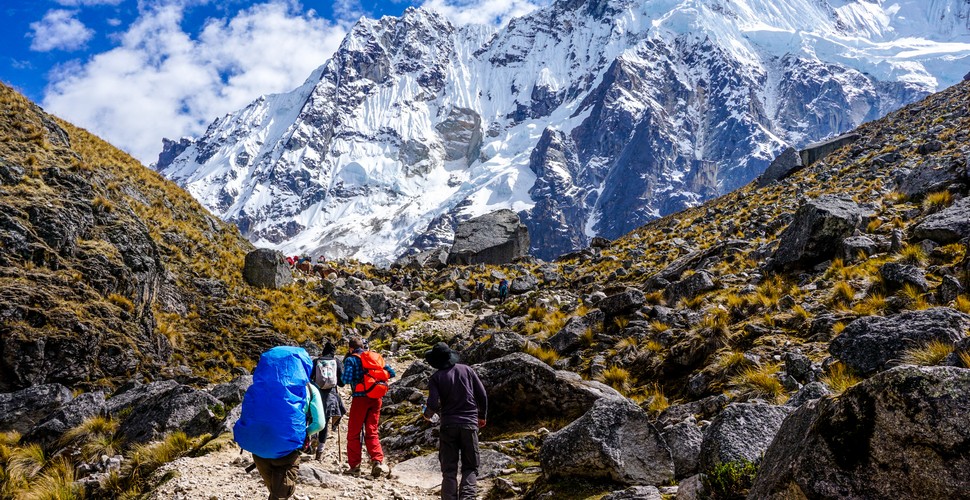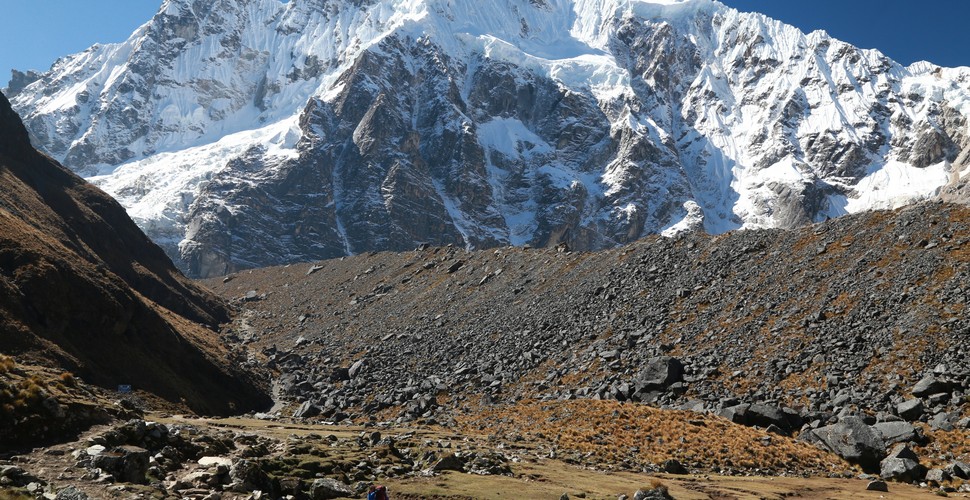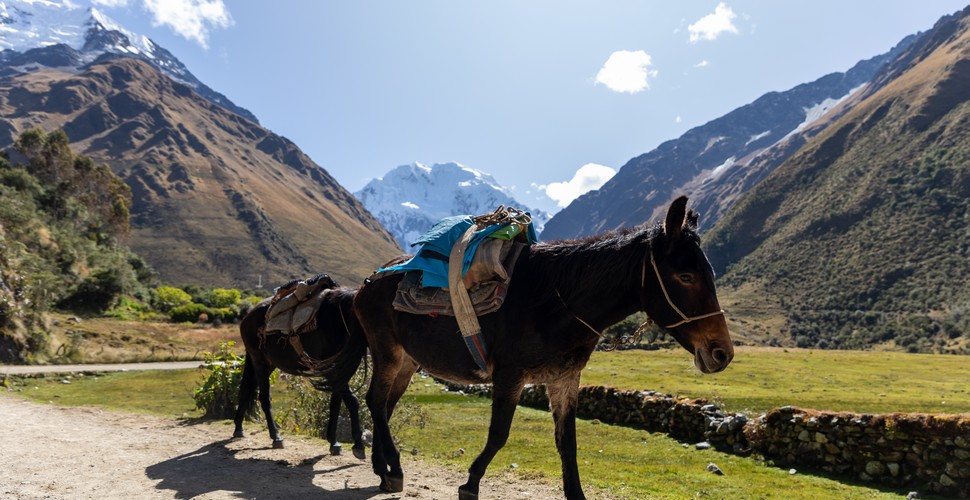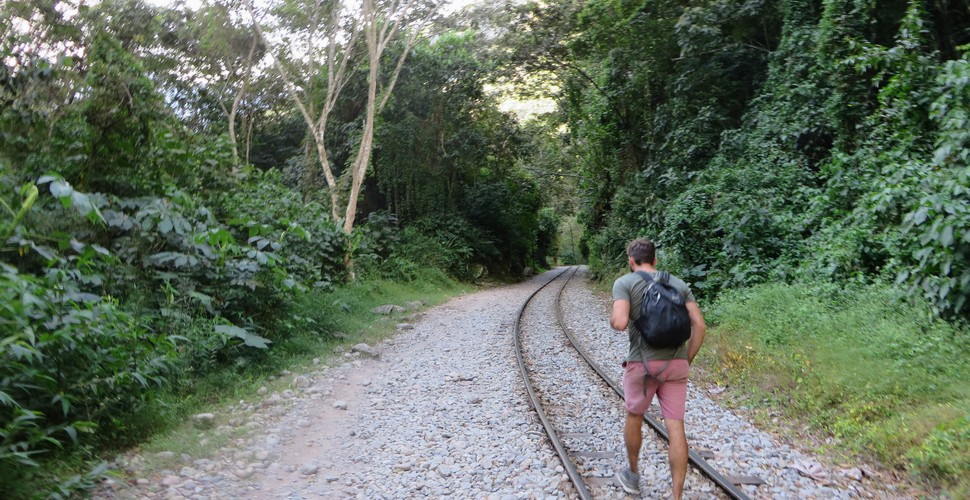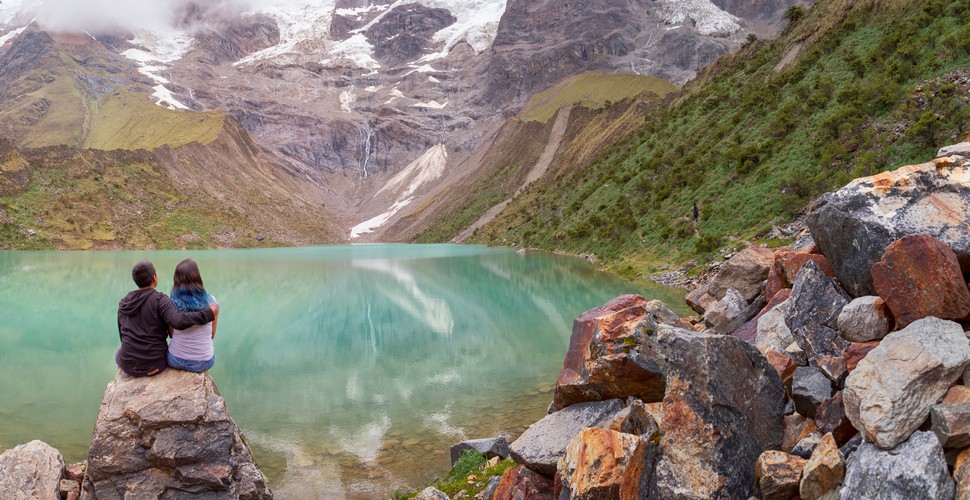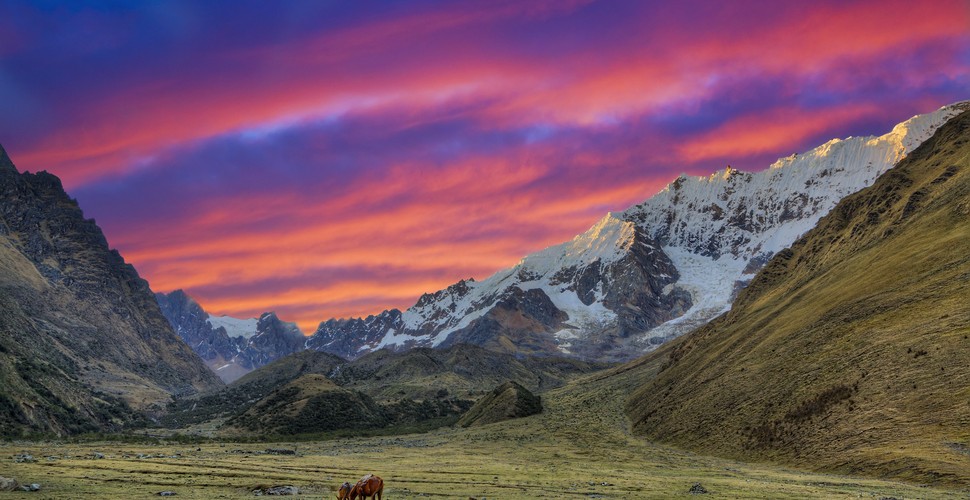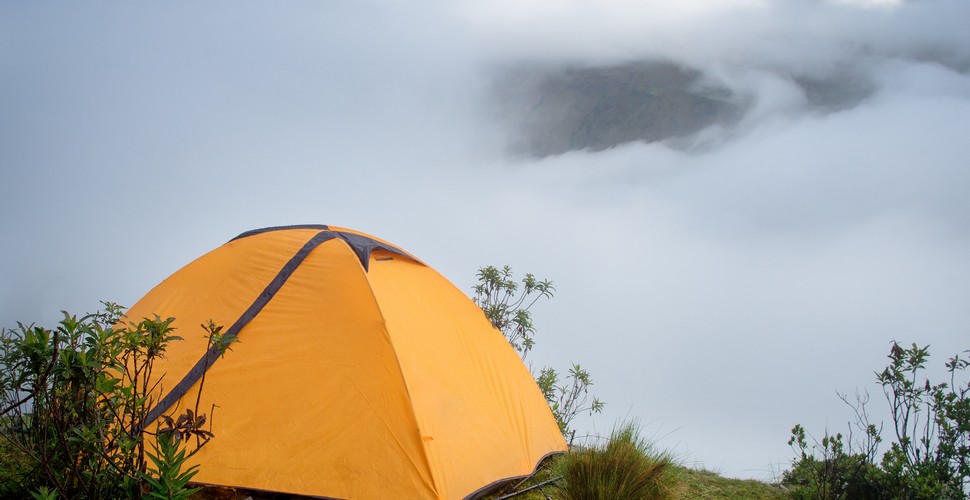

Claire Dean
Travel in South America is a joy to behold. The rich variety of destinations, experiences, landscapes and geography fascinated me so much, that I chose to relocate here, over 20 years ago! The best thing I ever did! Allow me to share my knowledge and passion for Central and South America with you and help you plan your holiday of a lifetime!

The 5-Day Salkantay Trek
Written by:Claire Dean
Last Update: 2025-01-05
The Salkantay Trek is one of the most popular ways to hike to Machu Picchu. Less famous than the iconic Inca Trail, the Salkantay Trek is both easier to book and a cheaper trek as there are no permits involved. On top of that, many say the Salkantay is just as beautiful if not more so than the Inca Trail! For these reasons, many people looking for a multi-day trek to Machu Picchu choose the Salkantay Trek. Find out more about this epic 5-day Salkantay trek here.
The Imposing Salkantay Peak
Background Information
The Salkantay Trek is 74 km (46 miles) long and is most commonly hiked over 4-5 days (with a visit to Machu Picchu on Day 5). The Salkantay trek holds historical significance, and like the Inca Trail, was a route the Incas once took to get to Machu Picchu. The main difference is that the Salkantay Trek is through the mountains reaching nearly 5,000m above sea level, whereas the Inca Trail is walking through ruins much of the way. It is said that the Salkantay Trek was the route that religious leaders took to get to Machu Picchu because the higher elevations brought them “closer to god.” The Salkantay Trek is named after the mountain that the trail passes, The Salkantay Mountain. It isn’t just this mountain you’ll see on the hike though as the trail offers varying landscapes including glaciers and tropical Andean forests.
Stunning Andean Scenery
Salkantay Vs. The Inca Trail
The Inca Trail is a world-famous trek, that is constantly ranked among the best hikes in the world. However, as many people will tell you, you will experience directly, that the Classic Inca Trail to Machu Picchu is crowded and usually booked throughout the year. While this is often the case, you should remember that the Inca Trail is one of the most amazing hikes in the world, and why so many people want to trek it! The whole system of Inca Trails called the Qapaq Ñan, is a network of ancient footpaths that connected the most important sections of the Inca Empire. The Incas built the trails, which are still used today by local people and visitors from all over the world.
Inca Trail
The Salkantay Trek is the lesser-known trek to Machu Picchu with more wildlife, breathtaking mountain scenery, and spectacular views. The Salkantay Trek is an option for hikers who want to experience the beautiful mountainous scenery of the Peruvian Andes and see an incredibly diverse nature and landscape that gradually reveals stunning views. It is a longer and more challenging trek than the Inca Trail, but it offers stunning scenery and a more authentic experience of the Peruvian Andes, passing through traditional Andean communities. There are certainly fewer ruins along The Salkantay trek, but there is the opportunity to visit glacial lakes, hot springs, coffee, and mango plantations as well as the lesser visited archaeological site of LLactapata.
Salkantay Trek
Whichever route you have selected, both treks offer breathtaking vistas, Inca ruins, and rich history of The Inca's way of life in this region.
Altitude is an Issue
I have already mentioned the high elevation of the Salkantay trek and it is worth it to talk a bit more closely about the acclimatization and the possibility of altitude sickness. Try to arrive in Cusco at least two or three days before the trek starts and focus on doing some physical activity. Close to Cusco, are Sacsaywaman and Qenqo ruins, which are awesome places to visit. You can take plenty of day trips from Cusco and give your body some time to adjust to the elevation. There are a lot of things to do in Sacred Valley near Cusco, such as an uphill hike to Pisac Ruins or visiting Rainbow Mountain, both of which are at high elevations.
High Elevation
Adequate acclimatization is very important because you will spend the first night 3800 meters above sea level. The following day, you will cross the mountain pass and sleep about 3900 meters above sea level, which is really high for an unacclimatized hiker. Although no one can ever know how you will be affected by the altitude, it is always better to be prepared and know what to expect (you might experience a headache or shortage of breath for example).
Mules on The Salkantay Trek
Why Book a Guided Trek?
Hiking with a guided group is the most comfortable option for enjoying the Salkantay Trek. Generally, the most challenging thing will be to find the right, professional, and honest tour operator. Always remember you will get the service you've paid for... sometimes it is not worth saving a couple of dollars and ruining your experience. When you take a tour, you don't need to worry about food, transportation, campsites, or equipment. Camping equipment is included in the price, you must only rent a sleeping bag with linen, mattress, or walking poles if needed). Always check if the bus from Aguas Calientes to Machu Picchu gate and Machu Picchu entrance is included in the final price. You will also walk only with your day pack as the travel agencies have porters who carry your extra clothes for you. Hiking is a joy when all you need to concentrate on is the quality of your photos and the stunning scenery all around you.
5th Day Hiking to Aguas Calientes
Another thing to consider is that on the first day, you visit the stunning Humantay Lagoon. This turquoise lake is a short hike from Soraypamapa on day one and many people actually do a day hike there. However, while you are in the region, it's a great idea to visit Humantay Lake on this excursion. You can also unwind in natural hot springs on your third day in Santa Teresa. Access to such beautiful natural pools definitely makes the Salkantay trek a great choice for your trek to Machu Picchu!
Humantay Lake
When is the best time to hike Salkantay?
With a bit of preparation, you can hike the Salkantay Trek all year round, probably with the exception of February, the wettest month of the year. The official dry season starts in May and ends in October. During those six months, you have a high chance to see clear skies and enjoy the sunshine throughout the day. Expect lots of hikers, especially in June, July, and August, when people in the USA and Europe have holidays. These months are Peruvian winter, which means the weather is sunny, dry, and more stable, but temperatures are lower. The rainy season starts in November and ends in April. Hiking in this season is more unpredictable.
Winter Salkantay
It rains the most in February when there is also a higher chance of landslides, mudslides, and some impassable sections. That’s why reputable companies, don’t run the trek in February. If you plan on hiking independently, to stay safe, we recommend avoiding walking the trail in February, too, just in case. The rainy season is the summertime, which means temperatures are higher, although it still gets cold in the evening, especially at high altitudes.
Rainy Season on Salkantay Trek
If you want to hike the Incredible Salkantay Trek, contact us here to reserve your epic hike!


